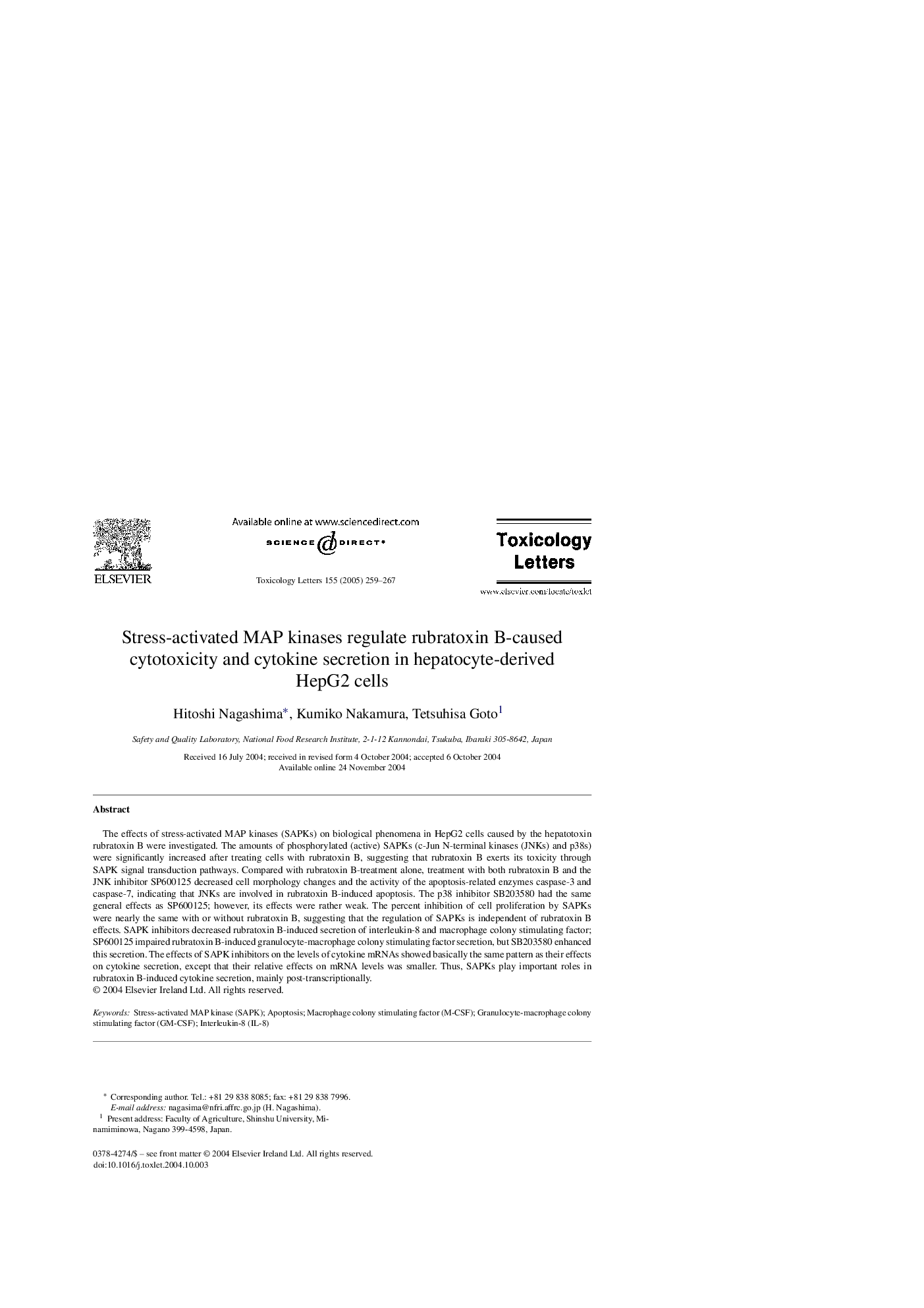| Article ID | Journal | Published Year | Pages | File Type |
|---|---|---|---|---|
| 9036498 | Toxicology Letters | 2005 | 9 Pages |
Abstract
The effects of stress-activated MAP kinases (SAPKs) on biological phenomena in HepG2 cells caused by the hepatotoxin rubratoxin B were investigated. The amounts of phosphorylated (active) SAPKs (c-Jun N-terminal kinases (JNKs) and p38s) were significantly increased after treating cells with rubratoxin B, suggesting that rubratoxin B exerts its toxicity through SAPK signal transduction pathways. Compared with rubratoxin B-treatment alone, treatment with both rubratoxin B and the JNK inhibitor SP600125 decreased cell morphology changes and the activity of the apoptosis-related enzymes caspase-3 and caspase-7, indicating that JNKs are involved in rubratoxin B-induced apoptosis. The p38 inhibitor SB203580 had the same general effects as SP600125; however, its effects were rather weak. The percent inhibition of cell proliferation by SAPKs were nearly the same with or without rubratoxin B, suggesting that the regulation of SAPKs is independent of rubratoxin B effects. SAPK inhibitors decreased rubratoxin B-induced secretion of interleukin-8 and macrophage colony stimulating factor; SP600125 impaired rubratoxin B-induced granulocyte-macrophage colony stimulating factor secretion, but SB203580 enhanced this secretion. The effects of SAPK inhibitors on the levels of cytokine mRNAs showed basically the same pattern as their effects on cytokine secretion, except that their relative effects on mRNA levels was smaller. Thus, SAPKs play important roles in rubratoxin B-induced cytokine secretion, mainly post-transcriptionally.
Keywords
Related Topics
Life Sciences
Environmental Science
Health, Toxicology and Mutagenesis
Authors
Hitoshi Nagashima, Kumiko Nakamura, Tetsuhisa Goto,
